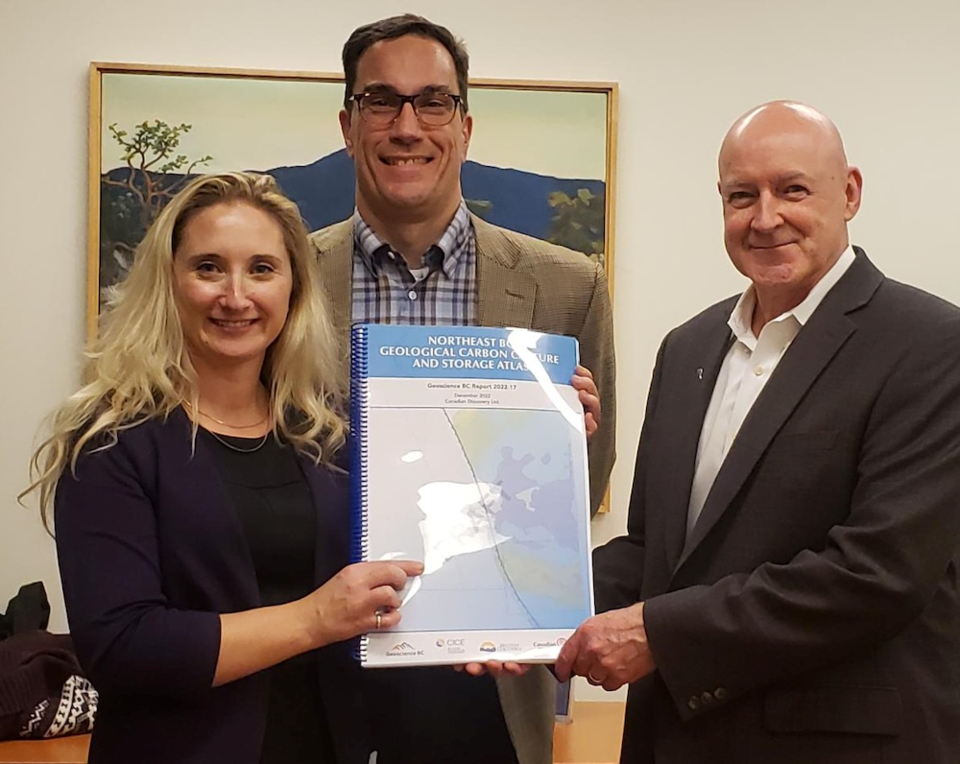A first of its kind study in British Columbia posits that more than six decades of provincial greenhouse gas emissions can be captured and stored in Northeast B.C.
Geoscience BC says the region’s geology is key to the province’s carbon management and reaching it’s net-zero goals.
It plans to present and discuss the findings of the new Northeast BC Geological Carbon Capture and Storage Atlas with its project partners at this week’s Natural Resources Forum in Prince George.
“Geoscience BC is proud to have been involved in the most comprehensive assessment to date of geological carbon capture and storage opportunities in northeast British Columbia,” Geoscience BC President and CEO Gavin C. Dirom said in a statement released Tuesday.
“I am excited to see how industry, government, communities, Indigenous groups and others use this public research in making decisions.”
According to a news release, the organization undertook the study in partnership with lead researchers Canadian Discovery Ltd., as well as the BC Hydrogen Office and the Centre for Innovation and Clean Energy.
Initial assessments show “significant potential” to store carbon dioxide in depleted pools north and northeast of Fort St. John, as well as in deep saline aquifers in areas around the city, and areas around Dawson Creek and Fort Nelson.
Geoscience BC says the research found as much as 4,230 megatonnes of carbon dioxide could be potentially stored in such formations — for comparison, it says the province's net emissions were 62.5 megatonnes in 2020. All told, that means the region could potentially store more than 66 years worth of B.C.'s GHG emissions, the organizations says.
“The Northeast BC Geological Carbon Capture and Storage Atlas is an important tool for communities in northeast British Columbia as we work towards net-zero and consider the new economic opportunities and diversity that it can bring,” said Fort St. John Mayor Lilia Hansen in a statement.
Geoscience BC says the early-stage public research has been peer-reviewed, and “includes geoscience data mapped against the locations of First Nation communities, cities and towns, stationary carbon dioxide emitters, existing roads and pipeline infrastructure to inform discussion and decisions about potential carbon capture storage, carbon management and low carbon hydrogen projects.”
It adds “significant additional research and modelling” are still required to fully understand where and how much carbon can be captured and stored at sites throughout the region.
In a provided statement, provincial energy minister Josie Osborne said, “With our clean electricity, abundant natural resources and innovative companies, B.C. can be a world leader in the growing carbon capture and storage sector.”
“We’re already seeing B.C. companies engaged in operations that show how carbon capture and storage is one of the tools to help us meet our CleanBC goals while creating new, high-paying clean-tech jobs throughout the province,” Osborne said.
Canadian Discovery researchers will also present a technical talk on the study at the upcoming SPE Canadian Energy Technology Conference and Exhibition in March 2023.
Learn more about the study by clicking




